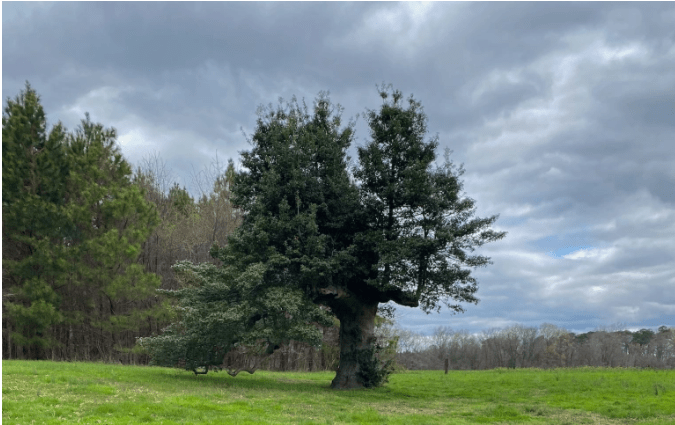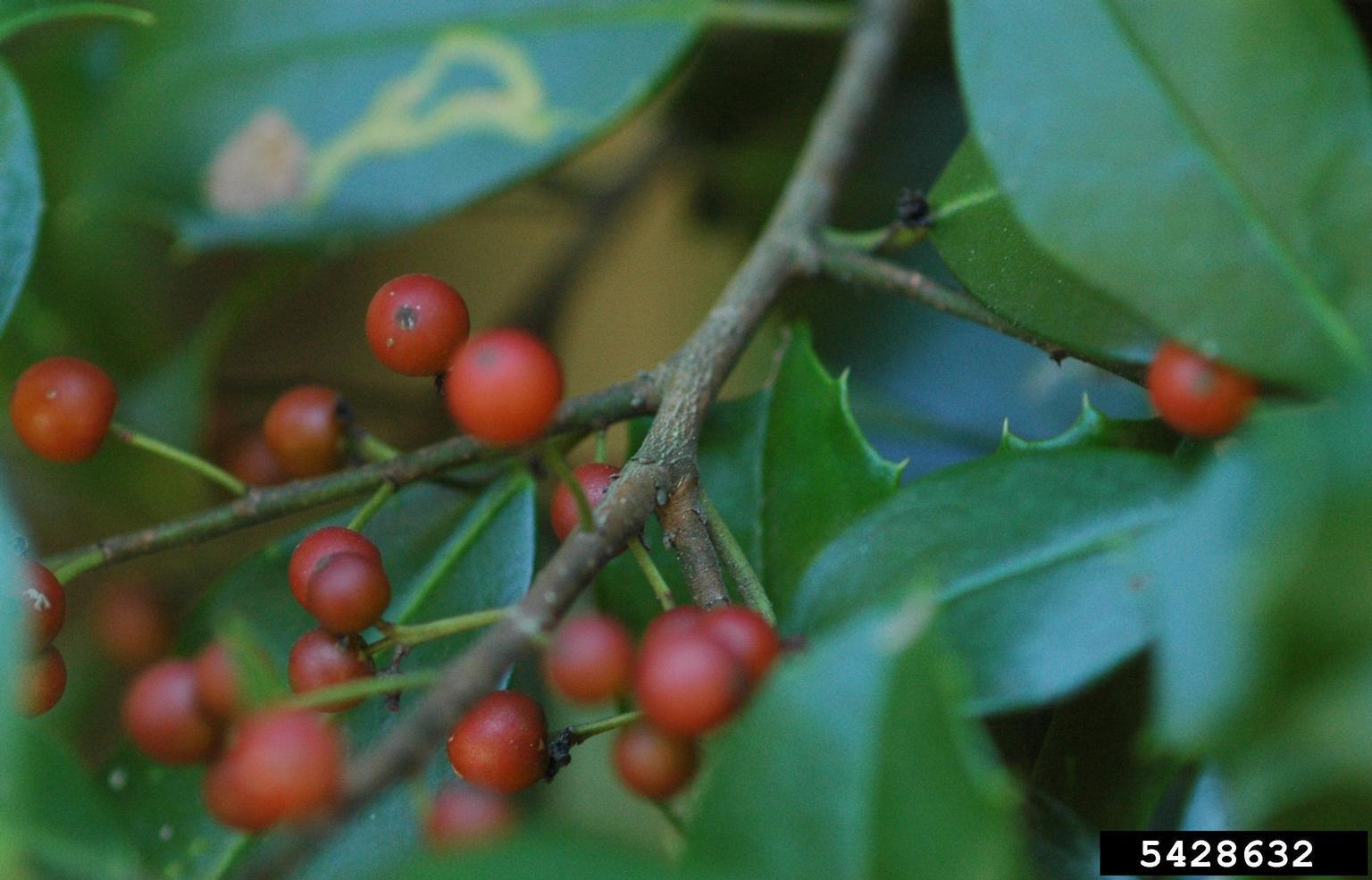Native Trees of Maryland: American Holly, Ilex opaca
John Hooven, Cape Atlantic (NJ) Conservation District forester
Presenting American holly, Ilex opaca, a real show stopper of a tree especially during the winter holidays. American holly is a slow growing, evergreen gymnosperm (flower producing). I. opaca is the hardiest of the broadleaf evergreens. The species distribution in Maryland is restricted by elevation, being found mostly along the eastern and western Chesapeake Bayshores and the I-95 corridor, but naturally absent in the piedmont and mountainous western Maryland. The species continues northward in coastal areas in the coastal plain north to Massachusetts. Its range expands dramatically to the south of Maryland. The American holly is dioecious, having female and male trees.
Since the pilgrims first settled in New England, American holly was noted for its striking similarity to English holly that is known to be used for decorating during the Christmas holiday season. And, to this date, American holly is primarily used as ornamental greenery. The plant is also used as a specimen species in the landscape.
American holly is a species extremely valuable to wildlife, particularly, birds and migratory birds overwintering in the region. Mammals will also consume its berries. The nectar from its flowers is also considered excellent for honey production. While the spiny leaves would be difficult for deer to browse, deer that are hungry enough will eat its foliage at times in a hard winter. Both male and female trees flower but only the female produces the familiar red holly berries.
Holly is a slow growing species with very good salt tolerance. It is not uncommon to find the species growing in coastal maritime forests, in dunes, and especially lowlands and swamps in the Delmarva Peninsula. In fact, in these areas, it is not uncommon to find stands of pure holly growing along with northern bayberry. While not considered a pioneer species, holly is an opportunist and will quickly sprout in cut over areas. It is usually and quickly shaded out by other quicker growing tree species. But holly will continue to persist in the understory well after the dominant forest of trees has established a canopy. Hollies are associated with forest covers that included loblolly, sweet gum and common hardwoods found in lowland, swampy areas.
Due to its slow growth, holly produces tight indistinguishable growth rings. This produces a tough and hard wood that is not particularly strong and is moderately heavy. The wood of holly is characteristically one of the whitest woods in nature. It has white sapwood and ivory white heartwood. The wood is used occasionally for pulpwood and lumber but more so as a veneer. Its primary use is in specialty purposes such as inlays, furniture, handles, novelties, wood engravings and carvings, among other uses. The wood can be dyed black and used as black keys on pianos, violin pegs and fingerboards.
Holly is unmatched in the landscape garden setting. By far, an impressive tree in the open landscape is a holly that has been growing for decades, or a century. One of the oldest growing hollies on record in Maryland is growing at the Wye Island Natural Resource Management Area. The tree is around 300 years old. Impressive trees in the landscape can also be found in areas of old farmsteads.

Source: Burns, R., and Honkala, B. Silvics of North America Volume 2. Hardwoods. United States Department of Agriculture (USDA), Forest Service, Agriculture Handbook 654.
